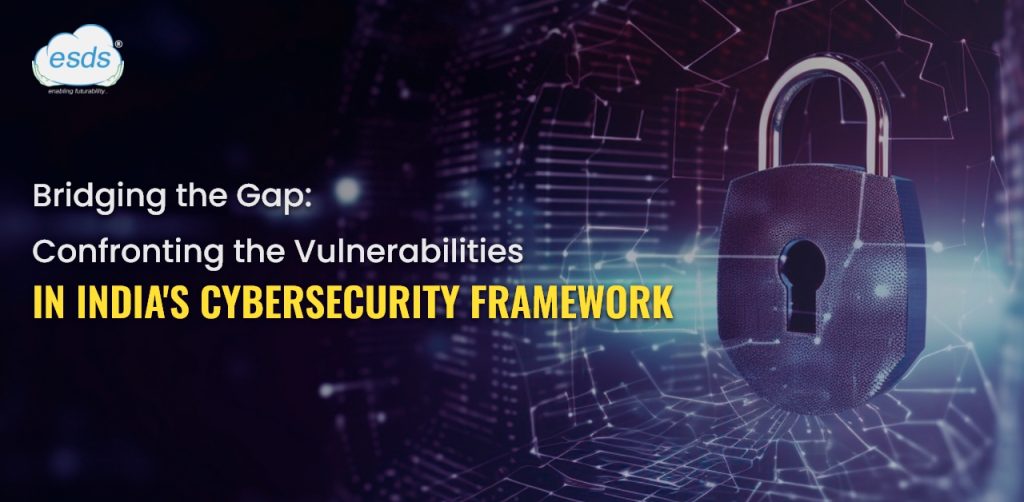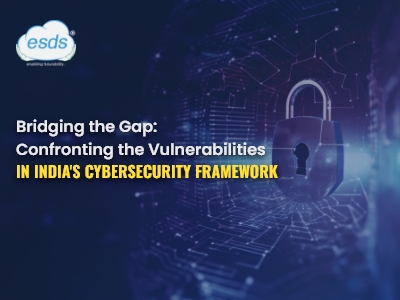Bridging the Gap: Confronting the Vulnerabilities in India’s Cybersecurity Framework
India’s booming digital landscape presents a double edge sword, India, a burgeoning tech powerhouse, has been at the forefront of adopting digital technologies, propelling its economy and governance into the digital era. However, the nation faces a paradox that could undermine its efforts to secure digital frontiers: many of its cybersecurity applications, designed to protect users from cyber threats, have been found to possess security flaws themselves. Recent findings point to a concerning trend: many of India’s cybersecurity applications, designed to shield against such threats, harbor significant security flaws themselves.

This revelation not only questions the efficacy of these protective measures but also highlights the urgent need for a comprehensive review and reinforcement of the country’s cybersecurity infrastructure. India witnessed a 70 per cent rise in cyberattacks in the third quarter (Q3) this year, with more than 1.6 billion blocked attacks across the globe originating from the country, according to a recent study by Indus face.
The Paradox of Vulnerable Security Apps
- Strengthening Security Protocols: Indian cybersecurity apps are elevating their security standards by embracing advanced encryption protocols, bolstering protection against cyber threats. By adopting advanced encryption protocols, these apps ensure robust security measures to shield user data from potential breaches and identity theft. Additionally, proactive measures are being deployed to address vulnerabilities such as SQL injection attacks, minimizing risks to database integrity. Regular updates and patches play a crucial role in bolstering application security by promptly addressing emerging threats and vulnerabilities, thereby enhancing the overall security resilience of these apps.
- Impact on Trust and Security: The impact of security flaws in Indian cybersecurity apps extends far beyond the realm of software vulnerabilities; it directly affects user trust and the overall security posture of India’s digital ecosystem. These flaws compromise the confidentiality, integrity, and availability of user data, creating a ripple effect that can have profound consequences on both individuals and the nation as a whole.
- Underlying Causes: The prevalence of security flaws in Indian cybersecurity apps can be attributed to several underlying causes, each contributing to the vulnerability of these systems. By examining these root factors, we can gain insight into why these security lapses persist and identify opportunities for improvement, such as rapid app development cycles one of the primary reasons behind security lapses in cybersecurity apps is the pressure to deliver products quickly to market that overlook security, while cybersecurity apps may undergo testing, these efforts are often cursory or incomplete, failing to uncover hidden vulnerabilities lurking within the code, and a the shortage of skilled cybersecurity professionals exacerbates the problem, as organizations struggle to recruit and retain qualified talent capable of addressing complex security challenges.
Stakeholder Implications
- Users at Risk: Users of cybersecurity apps with security flaws are at significant risk, facing a range of potential consequences that can have far-reaching implications for both individuals and the digital economy as a whole. By delving into these risks, we can better understand the urgent need to address security vulnerabilities and protect user data from exploitation.
- Corporate and Government Vulnerabilities: Analyze the broader implications for businesses and government operations, Malicious actors, including state-sponsored cyber espionage groups and cybercriminal organizations, may exploit vulnerabilities in these apps to gain unauthorized access to sensitive corporate and government data, By exploiting vulnerabilities in these apps, attackers can infiltrate corporate and government networks, disrupt essential services, and cause widespread chaos and disruption, and Data breaches and cyberattacks can result in significant financial losses due to the costs of incident response, remediation efforts, regulatory fines, and legal liabilities. .
- Reputation and Economic Impact: Consider the effect on India’s ambition to become a global tech leader and the potential economic repercussions stemming from a lack of confidence in cybersecurity measures.
Toward a More Secure Future
- Strengthening App Security: Propose solutions such as adopting a ‘security by design’ approach, implement a proactive approach to security monitoring and vulnerability management by conducting continuous vulnerability assessments and penetration testing, and the implementation of international cybersecurity standards. Standards such as ISO/IEC 27001, NIST Cybersecurity Framework, and OWASP Top 10 provide comprehensive guidelines and frameworks for developing secure software and managing cybersecurity risks effectively.
- Building Skilled Workforce: Shed light on the necessity of bolstering educational and training endeavour’s aimed at empowering developers and cybersecurity professionals with cutting-edge competencies and insights. This involves investing in specialized programs and resources to ensure that individuals are equipped to tackle evolving challenges in the field effectively.
- Public-Private Collaboration: Highlight the need for robust partnerships among government, businesses, and academia to foster innovation in cybersecurity. Leveraging their combined expertise and resources can bolster the development of advanced technologies and practices to combat cyber threats effectively. Closer collaboration allows for the exchange of insights and resources, enriching cybersecurity education and awareness efforts. Together, these efforts strengthen our cybersecurity ecosystem and protect digital infrastructure from evolving threats.
Policy and Regulation
- Enhancing Regulatory Frameworks: Examine the pivotal role of government in setting forth and enforcing stringent cybersecurity regulations to safeguard digital ecosystems. These regulations may encompass a range of measures, such as obligatory security audits and compliance certifications for applications. By mandating these assessments, governments aim to ensure that digital platforms adhere to robust security standards, thereby fortifying their resilience against cyber threats. Moreover, these regulations serve to instil confidence among users regarding the safety and integrity of digital services. Through proactive regulation and enforcement, governments can foster a more secure online environment, bolstering trust in digital technologies and mitigating the risks associated with cyber incidents.
- Incentives for Secure Development: Consider the feasibility of government incentives aimed at encouraging developers to prioritize security in their projects. These incentives could take various forms, including tax incentives, grants, and recognition programs. By offering tax breaks to companies that demonstrate a commitment to cybersecurity in their software development processes, governments can incentivize proactive security measures. Additionally, grants could be provided to support research and development efforts focused on enhancing security practices and technologies. Furthermore, recognition programs could acknowledge and reward organizations that excel in implementing robust security measures, thereby promoting a culture of cybersecurity excellence.
Conclusion
The alarming prevalence of security flaws in Indian cybersecurity apps necessitates immediate action. By prioritizing secure development practices, implementing stricter data protection regulations, and fostering a culture of cybersecurity awareness, India can build a more secure digital infrastructure and protect its citizens from the ever-evolving threat landscape.
ESDS Security Insight services offer timely updates and in-depth analysis on the dynamic cybersecurity threat landscape, empowering enterprises to remain vigilant and ready to counter risks. With our comprehensive Security Insight Services, ESDS assists in lowering organizational risk, ensuring compliance, enabling informed technology choices, and enhancing overall security readiness. Trusted by over 400 renowned banks, 150 enterprises, and 200 government agencies nationwide, ESDS is committed to safeguarding businesses against evolving cyber threats.
Visit us: https://www.esds.co.in/soc-as-a-service
- The Future of VAPT Services: AI, Bug Bounties, and Beyond - June 20, 2025
- Government Community Cloud: The Backbone of Modern Public Infrastructure - April 7, 2025
- The Rise of Explainable AI: Building Trust and Transparency - January 24, 2025
